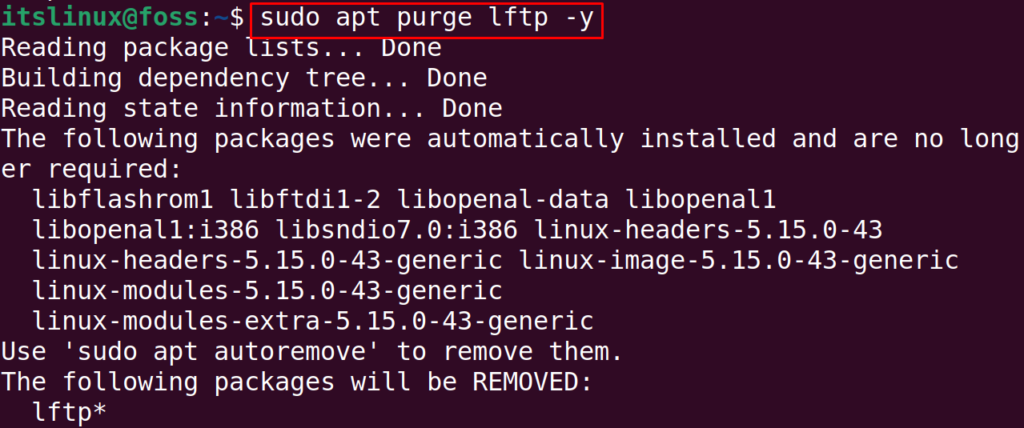The “lftp” program establishes connections between client-host machines with different protocols. These protocols contain “UDP”, “HTTP”, “FTP”, and other protocols. It manages the machine’s file systems and transfers files from one system to another.
This blog will briefly explain the “lftp” command, its installation, and usage with examples:
- How to Install the lftp Command in Linux?
- How Does lftp Command Work in Linux?
- How to Uninstall lftp Command in Linux?
How to Install the lftp Command in Linux?
To install the “lftp” commands on Ubuntu-based Linux distributions, follow the steps mentioned:
Step 1: Update the Packages
It is recommended to update all the packages before installing new packages on the system with the following command:
$ sudo apt update #For Debian/Ubuntu/Linux Mint
$ sudo yum check-update #For CentOS/RHEL-Based
$ sudo dnf check-update #For Fedora
$ sudo pacman -Syu #For Arch-Based

In this way, the package indexes have been updated.
Step 2: Install the lftp Package
To install the “lftp” package in different Linux distributions, execute the below script:
$ sudo apt install lftp #For Ubuntu, Debian, and LinuxMint
$ sudo yum install lftp #For RHEL/CentOS-Based
$ sudo dnf install lftp #For Fedora
$ sudo pacman -S lftp #For Arch-Based

To confirm the execution of the above command, display the installed version of the “lftp” command:
$ lftp --version

The output shows that version “4.9.2” of lftp has been installed in the system.
How Does lftp Command Work in Linux?
The “lftp” command has various uses, such as users can connect to the remote server using the lftp command. Different examples are as follows:
Example 1: Invoking the Application From the Shell
To establish the connection with the host server using the lftp command, the only thing we have to do is provide the dummy URL “ftp://ftp.remotehost.com” of that machine:
$ lftp ftp://ftp.remotehost.com

In the above command, the lftp command is used with the dummy URL. The command line terminal with the hostname can be seen when the connection is successfully established.
Example 2: Connect to the Dummy Machine
For this method, first, navigate to the lftp command shell using the command:
$ lftp

Now again, connect to the dummy machine by using a dummy URL “ftp://ftp.remotehost.com” as we used in the previous method:
> open ftp://ftp.remotehost.com

Exit the lftp shell using the command:
> exit

In this way, the lftp shell has been terminated.
Example 3: Connect and Access the Remote Machine
Some command usages of the lftp command are accessing the local machine. In our case, access the remote machine whose username is “itslinuxfoss” and hostname is “ubuntu”, as seen in the below figure:
$ lftp sftp://itslinuxfoss@ubuntu

The output shows that the remote machine has been accessed successfully.
To explore the usage of the lftp command, we used its help option:
$ lftp
> help

All the options which can be used with the lftp command are displayed.
How to Uninstall lftp Command in Linux?
To uninstall the lftp command in different Linux distributions, use the below script:
$ sudo apt purge lftp -y #Debian, Ubuntu and LinuxMint
$ sudo yum remove lftp #For CentOS/RHEL
$ sudo dnf remove lftp #Fedora
$ sudo pacman -R lftp #Arch Linux

The output shows that the “lftp” package has been removed with all dependencies.
Conclusion
The “lftp” command is utilized to transfer files or manage files in a remote machine by making a connection over protocols. Before using this, it is necessary to install the “lftp” command in the operating system using an appropriate distribution command. This post has explained the usage of the “lftp” command in Linux.
